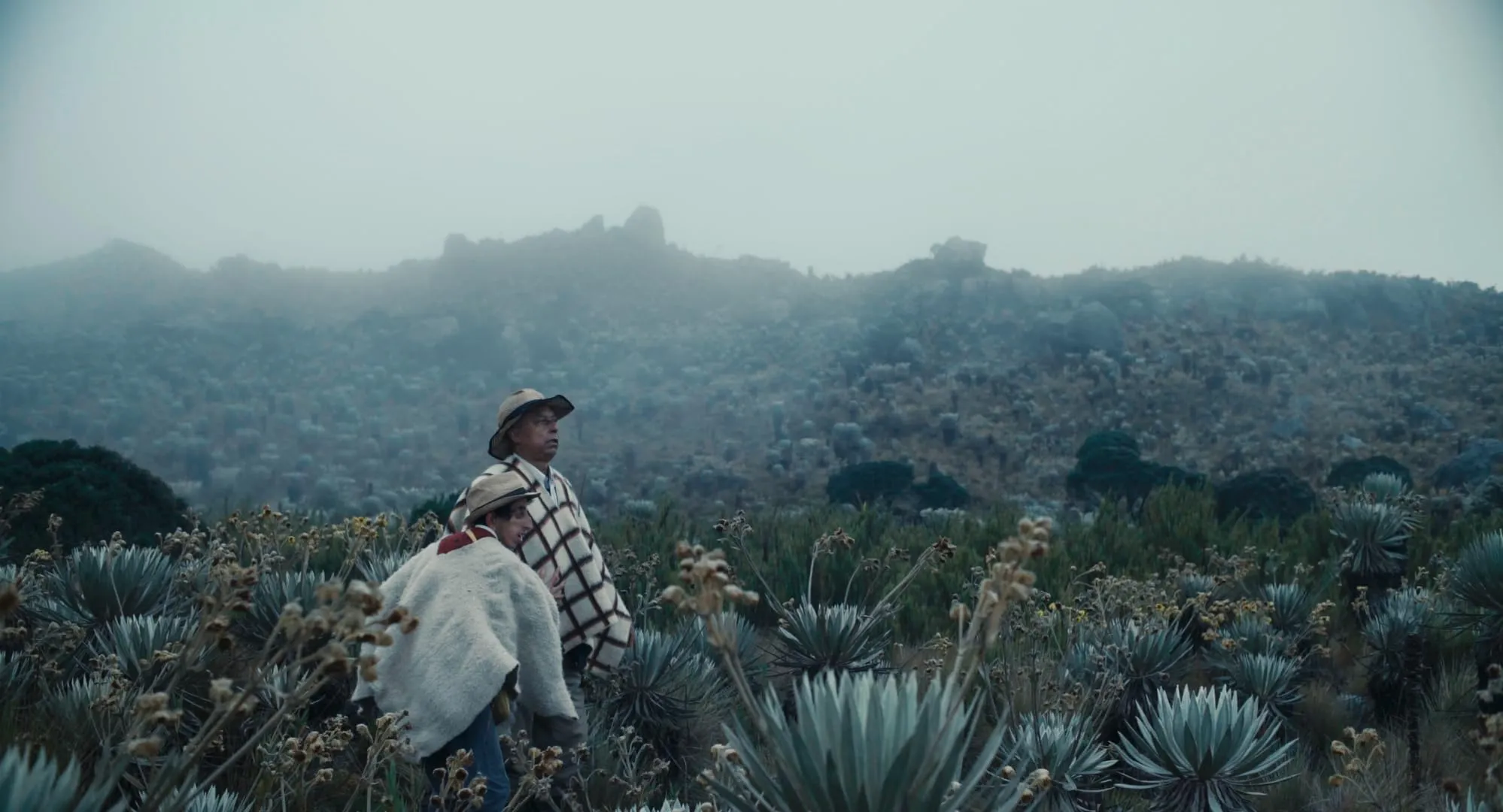There are films that tell stories, and then there are films that inhabit a state of being. A Vanishing Fog is firmly the latter, a cinematic poem whispered from a world on the precipice of nonexistence. We are introduced to F, a solitary figure moving through a landscape that seems to exist outside of time.
He is a guardian in the purest sense, tethered to two fading entities: his father, whose mind is receding like a slow tide, and the ancient Colombian highlands, a place of profound, mystical beauty being quietly erased. The film’s atmosphere is its primary language.
It offers little in the way of conventional narrative, asking instead for a viewer’s patience, for a willingness to be immersed in its quiet, visual meditation. Through the perpetual haze, we sense the pressure of an outside world, an unseen force of greed that threatens to swallow this last pocket of sanctity. It is a portrait of a slow, inevitable erasure.
The Breathing Tundra
The Páramo of Sumapaz is not a setting; it is a living, breathing consciousness. Director Augusto Sandino and cinematographer Gio Park render this high-altitude tundra as a patient entity, its alien flora and constant mists painting a world that feels both pre-human and post-apocalyptic.
The camera does not merely observe; it communes. Sweeping vistas are imbued with a sense of immense, lonely grandeur, while close-ups on strange plants feel like explorations of an alien biology. The color palette gives the air a pinkish, dream-like quality, suggesting a reality adjacent to our own. This sublime beauty makes the intrusion of its decay all the more violating.
A distant explosion rattles the quiet. A mountainside is ripped open, a raw wound in the earth. The personification is complete; we are watching a magnificent being sicken and die. The fragility of this place is inextricably tied to the film’s emotional core, mirroring the slow fading of F’s father and the erosion of F’s own hope.
A Voice without Sound
F’s silence is not an absence of speech but a profound statement of his condition. Marooned in his duties, his existence is one of profound isolation. His inner world bleeds onto the screen not as dialogue, but as fragments of poetic text—a written consciousness that reveals a mind grappling with its own solitude.
Sebastian Pii’s performance is a study in physical embodiment; his small frame carries the immense weight of his world. The film does not shy away from the primal, often unsettling, aspects of his loneliness. His desires manifest in strange, surreal interactions with the flora and fauna around him, a desperate reach for connection in a world that offers none.
His effort to learn English feels less like a practical skill and more like a metaphysical plea. It is a scream in a foreign tongue, launched into the void with the faint hope that a different language might finally be heard by an indifferent cosmos.
Mechanical Prayers and Fading Worlds
To seek a traditional plot in this film is to miss its purpose. The experience is sensory, an immersion into a mood of beautiful decay. Meaning arrives through potent, often baffling, symbols. An escalator appears in the wilderness, reaching for the sky.
It is a starkly mechanical prayer, a man-made construction attempting a desperate, and perhaps foolish, escape from the failing earth. The sound design by Emil Olsen is the world’s ailing heartbeat. The recurring sound of a respirator becomes an atmospheric presence, suggesting the labored breathing of the land itself, or perhaps of F’s father, or of faith itself.
The film operates as a modern fable, where magical realism is not a source of wonder but a symptom of reality breaking down under immense pressure. It leaves you with powerful, unsettling images that resist simple interpretation, reflecting a world where the only certainty is the fog that will eventually consume everything.
A Vanishing Fog Debuted in festivals like Tallinn Black Nights and SXSW (winning a cinematography award), it was released theatrically in the U.S. on April 23, 2025.
Full Credits
Director: Augusto Sandino
Writer: Augusto Sandino
Producers: Augusto Sandino, Nubia Stella Cubillos (plus co‑producers Michal Krecek, Gio Park, Mario Viana García)
Cast: Christian Ballesteros, Nury Márquez, Sebastian Pii, Sandra Roses, Mario de Jesús Viana
Director of Photography: Gio Park
Editor: Augusto Sandino
Composer: Emil Olsen (also credited for sound design)
The Review
A Vanishing Fog
A Vanishing Fog is a challenging, hypnotic meditation on decay. It rejects conventional storytelling in favor of a profound sensory immersion into a dying world. This is a film for the patient viewer, one willing to sit with ambiguity and find meaning not in plot, but in its breathtaking visuals and the deep melancholy of its atmosphere. It is a haunting, quiet piece of cinematic poetry that lingers long after the mist has cleared, offering a beautiful, unsettling look into oblivion.
PROS
- Breathtaking and hypnotic cinematography.
- A deeply committed and powerful non-verbal lead performance.
- Masterful creation of a dense, contemplative atmosphere.
- Potent and unforgettable symbolic imagery.
CONS
- Its slow, plot-averse narrative may prove alienating.
- Deliberately ambiguous story can feel frustrating.
- Some surreal sequences are unsettling.
- More of a sensory experience than a story-driven film.
